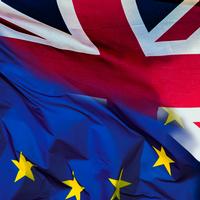With the publication of the results of wave nine of the British Election Study, the survey conducted in the days immediately after the EU referendum between the 24th June and the 4th July 2016, it becomes clear that the political mandate for Brexit is even more evenly divided between those seeing a future for the UK within the EU, and those voting to leave the union. These figures reveal that immediately after the vote around one million people regretted their leave vote, and if they had voted to remain the result would have been between 52.9% - 50.5% Remain and 47.8 - 49.5% Leave. This is not to call for a revote, or even to question the results of the Referendum – in a mature democracy people clearly have to take responsibility for their action on the day of voting – but to highlight that the country is truly divided on the question of the UK’s future role in the EU and perhaps also in the world.
Whether slightly more than half of the country desire to leave, or slightly more than half wish to remain, the real mandate for the British government is to steer a course which respects both halves of the UK, maintains a viable economic and socio-cultural future for the country, and importantly identifies and acts upon the real reasons why the population on both sides voted as they did.
#Bregret
In wave nine of the British Election Study over 30,000 respondents were asked about how they voted, and also whether they had any regrets about it in the immediate aftermath of the results being announced[1]. According to the survey, the proportion regretting their vote was significantly higher among leave voters (5.78 %) compared to remain voters (1.43 %).
Table 1: Percentage regretting their vote in each EU referendum camp (N = 28248 )
|
|
Remain (%) |
Leave (%) |
|
Regrets - No |
97.67 |
89.93 |
|
Regrets - Yes |
1.43 |
5.78 |
|
Regrets - Not sure |
0.91 |
4.29 |
We can apply these (weighted) survey results to the actual referendum outcome: if these levels of regret are representative nationally and the referendum had been repeated only ten days or so later, what would the result have been?
Table 2: Actual EU referendum results
|
Vote |
Result |
% |
|
Leave |
17,410,742 |
51.89 |
|
Remain |
16,141,241 |
48.11 |
Taking the numbers of voters as they voted on June 23rd we can see the difference between the two was 1,269,501 voters (Table 2). If we apply the percentages that regretted their vote according to the survey: just over one million Brexiters would now vote to Remain, while around a quarter of a million of those who had voted to remain, would now vote to leave (Table 3).
Table 3: Hypothetical numbers of voters regretting their decision
|
|
Remain |
Leave |
|
Regrets - No |
15,764,690 |
15,657,447 |
|
Regrets - Yes |
230,311 |
1,005,677 |
|
Regrets - Not sure |
146,240 |
747,618 |
We can extrapolate this into a hypothetical referendum result (Table 4) by assuming the regrets – yes and the regrets – not sure switch camps.
Table 4: Hypothetical referendum results with all regretters switching
|
Vote |
Result |
% |
|
Leave 2 |
16,033,998 |
47.79 |
|
Remain 2 |
17,517,985 |
52.21 |
As we can see from Table 3, 1,753,295 regretted their Leave vote and 376,551 regretted their Remain vote. This results in a 1.4 million switch to Remain, giving them now 52% of the vote. This means the final result would place the remainers ahead by a near one and a half million votes and 4.4% of the vote.
Even if we are generous and place those who were unsure about whether or not they regretted their decisions to stay with their original vote, the result is the same with just over half the voters voting to remain, and just under half to leave (Table 5).
Table 5: Hypothetical referendum results with only firm regretters switching camp
|
Vote |
Result |
Prop |
|
Leave 2 |
16,635,376 |
49.58 % |
|
Remain 2 |
16,916,607 |
50.42 % |
It should be noted, however, that the regret data only refers to people who had actually voted. We do not know how strongly abstainers regret abstaining, or how that varies according to which camp they are in. Additionally, the regret data were collected in the 10 days after the referendum, and the situation may well be very different four months later, but we do not have recent data with the reliability of the British Election Study.
The first message is thus that in terms of quantity of opinion we are a truly equally divided nation. Which then asks how can the British government steer a course which respects both halves of the UK?
Why the population voted as they did
In particular, we need to identify the real reasons why the population on both sides voted as they did - a question which has led to mass speculation, mainly by journalists and think tanks. However, we now have robust scientific analysis which broadly supports much of the speculative comment. This month (October 2016) has also seen the publication by the Centre for Competitive Advantage in the Global Economy at the University of Warwick of one of the first comprehensive district level analyses of the reasons why the population voted as it did on June 23rd , funded by the ESRC[2]. This paper analysed the vote across 380 local authority areas in the United Kingdom. While the findings endorsed, rather than questioned, less in-depth analysis, it provides a clear confirmation of our understanding. Firstly, the fundamental characteristics of the voting population - in particular their age and education profiles - were key drivers of the vote to leave share, a subject which this Blog earlier considered. Age had one of the largest predicative powers, with younger voters intending to vote remain and older voters leave, explaining up to 78%.
Secondly, there was the historical importance of manufacturing employment, low income and high unemployment, and most strikingly the impact of fiscal austerity since 2008. Indeed, provision of public services and the severity of fiscal cuts explain just over 50% of the variation in the Vote Leave share. As a consequence, the authors argue that modest reductions in fiscal cuts at the local authority level, less than £50 per person, may have been sufficient to lead to the opposite referendum outcome, pushing the Vote Leave share below 50%. The overall reductions in fiscal cuts for the UK as a whole would have been under £3 billion.
In contrast, in terms of increases in immigration, only migration from the mainly Eastern European EU accession countries positively correlates with the Vote Leave share, and there are clear interaction effects. “A larger flow of migrants from Eastern Europe reaching a local authority area with a larger share of unqualified people or a larger share of manufacturing workers is associated with a larger Vote Leave share, whereas the opposite is true when a large flow of migrants from Eastern Europe reaches an area with a large share of those working in finance, or an area with higher median hourly pay”. Initial conditions do matter.
As a consequence, the paper concludes that modest reductions in fiscal cuts could have swayed the referendum outcome, while in contrast, even major changes to immigration from Eastern Europe would have been very unlikely to sway the vote.
The authors, however, also touch upon the backlash against globalisation as another important factor in the leave vote and its interaction with education. “Facing declining incomes and the challenge of adapting to a rapidly changing environment in terms of structural change and immigration, it may not be surprising that voters in some areas seized the opportunity to lash out at the established political order”. They thus conclude that the voting outcome of the June 23rd referendum was broadly driven by a population that is older, less educated and confronted with below-average public services, with limited human and economic capital resources enabling them to respond to the challenge of economic and social change.
It is this real division, not only in quantifiable numbers, but also qualitative experience which is highlighted in another recent paper written by Jennings and Stoker[3] before the referendum. In this paper, they strongly argue that a dynamic of global economic development results in many countries experiencing uneven development, with their populations divided between those who can access highly skilled jobs and those who cannot, with a population divided between life in cosmopolitan areas of growth and in backwater areas of decline. “There are emerging out of these processes two versions of England. In cosmopolitan areas we find an England that is global in outlook, liberal and more plural in its sense of identity. In provincial backwaters we find an England that is inward-looking, relatively illiberal, negative about the EU and immigration, nostalgic and more English in its identity”.
Balancing the local and the global
In the first of his 2016 Reith Lectures on Identity, Kwame Anthony Appiah asks us to accept that we all have complex not fixed identities and to recognise that these may change through time. In response to a question, Professor Appaih draws on his 2006 book Cosmopolitanism: Ethics in a World of Strangers to argue that the 21st Century is defined by the synergy between localism and globalism.
The scientific evidence now available is clarifying the Brexit decision. The UK did not vote leave on anti-immigrant grounds per se – many voted because they believe in the local over the global, because they see their future grounded in local economic and social concerns.
And yes the UK government does have an obligation to those who voted to leave - to those voters who were less resilient to an increased set of risks arising not only through the 2008 recession, but importantly from the inevitable move of all nations into a globalised world. The government’s obligation is to ensure that these individuals, households and communities do not suffer further through any UK economic downturn engendered through Brexit.
Not only is the UK more or less evenly divided between those voting to remain and those voting to leave, but it is becoming clear that the real division between the two groups was not age, or class or income, but between those who saw the UK as part of a global future and those who emphasised the local. Moving forward, governments, communities and individuals will increasingly need to balance the often opposing forces of the local and the global - within their own policies, structures and lives. And this surely is the true mandate that the UK government was given on June 23rd.
[1] With thanks to Dr Maja Založnik for contributing to this section/
[2] Sascha O. Becker, Thiemo Fetzer & Dennis Novy (2016) Who Voted for Brexit? A Comprehensive District-Level Analysis . Centre for Competitive Advantage in the Global Economy Department of Economics, No 306.
[3] Will Jennings and Gerry Stoker (2016) The Bifurcation of Politics: Two Englands The Political Quarterly, Vol. 87, No. 3.
About the Author
Sarah Harper is Professor of Gerontology at the University of Oxford, Director of the Oxford Institute of Population Ageing and Senior Research Fellow at Nuffield College.
Comments Welcome:
We welcome your comments on this or any of the Institute's blog posts. Please feel free to email comments to be posted on your behalf to administrator@ageing.ox.ac.uk or use the Disqus facility linked below.
Opinions of the blogger is their own and not endorsed by the Institute
Comments Welcome: We welcome your comments on this or any of the Institute's blog posts. Please feel free to email comments to be posted on your behalf to administrator@ageing.ox.ac.uk or use the Disqus facility linked below.













